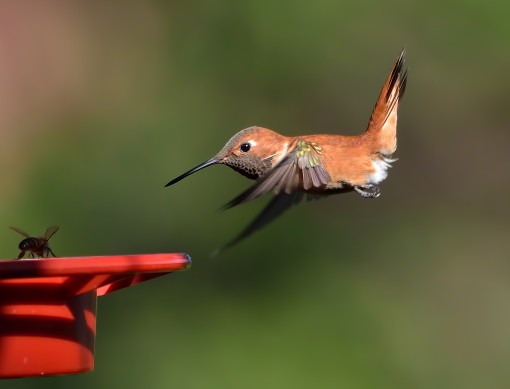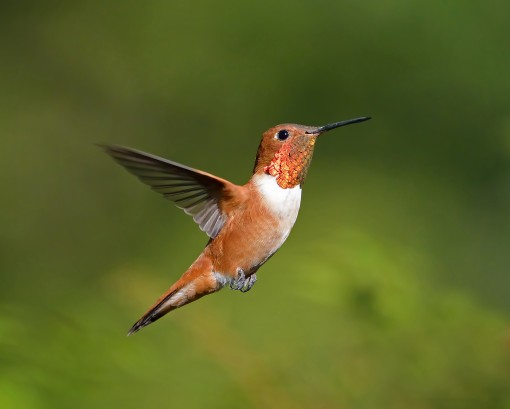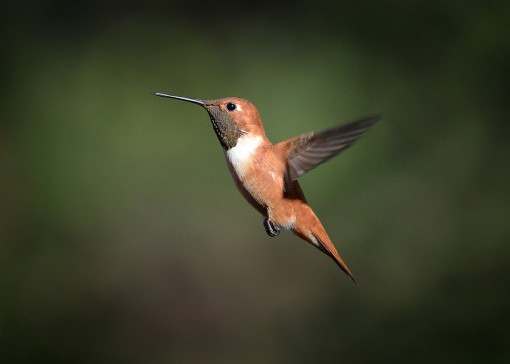A Winter’s Tail
April 9, 2014 | By Shoal Creek Conservancy
This blog post was written by Ted Lee Eubanks. To learn more about the author, please visit this site.

I love the rufous hummingbird’s flaps-down, tail-up approach to the feeder, waiting until the last nanosecond to hit the skids and float into the spigot.
Shoal Creek’s gifts are not episodic or ephemeral. Shoal Creek benefits Austin day after day, year after year. Shoal Creek’s repairs, therefore, must be as resilient and long lasting as the benefits we demand from the creek.
Wildlife has evolved to take advantage of the seasonal changes along our creek. Fruits and nuts are ripe in the summer and fall, and many species have evolved to depend on this seasonal abundance to fatten for winter. Insects are especially abundant in spring, and birds will often focus their foraging strategies on protein-rich insects before heading north to nest. This week, I have been watching the cedar waxwings (a bird that is normally a frugivore) flycatching from tall perches along the creek. The waxwings will leave for the north in May, and they depend on the fat they will store these next few weeks to fuel their migratory flight.
Hummingbirds feed on both insects and on nectar. Flower nectar is only available during blooming season (spring and summer), although there are a number of exotic shrubs cultivated in Austin (such as shrimp plant) that bloom in winter. Nectar gives the hummingbird the energy to prey on insects, the primary source of their protein. A hummingbird feeder simply provides an alternative to the flowers that these birds normally depend on for their energy.
I maintain my hummingbird feeders year round. This year both rufous and broad-tailed hummingbirds overwintered in my yard. Now, the resident black-chinned hummingbirds have returned, and the winter birds are preparing for their flights north. These winter birds depend on the creek from November through April, half of their year. The summer residents will need what the creek provides to feed their young and to prepare both young and adults for their flights south next fall.

The creek needs to be intact in order to deliver its benefits throughout the year. No part can be missing. No species of flowering plant that birds depend on can be absent. These birds have evolved to take advantage of every aspect of the creek. When we change the creek, the impact ripples throughout the ecosystem. Remove one type of tree or shrub and the effects are felt by others.
When we try to pick out anything by itself, we find it hitched to everything else in the Universe…John Muir
My winter hummingbirds should be leaving soon. One, the rufous hummingbird, has the longest flight per body weight of any bird in the world. I have enjoyed watching him throughout this winter. The coldest temperatures did not seem to dissuade him from foraging for insects in the live oaks. I love the rufous hummingbird’s flaps-down, tail-up approach to the feeder, waiting until the last moment to hit the skids and then easily float into the spigot.
This tiny bird, a member of the smallest group of birds in the world, has wintered the past two years in my yard along Shoal Creek. This bird completely depends on my efforts (feeders) as well as the intact ecosystem of Shoal Creek.
Join the Shoal Creek Conservancy, and support our efforts to ensure that this ecosystem remains complete. With your help, we will do this.

